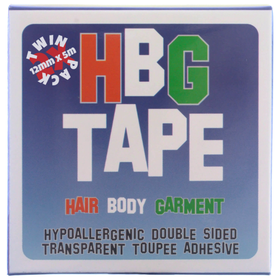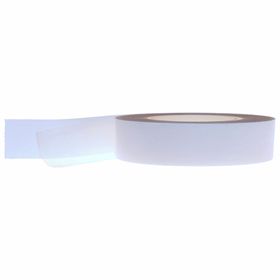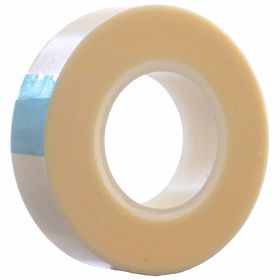HBG tape© is used extensively for discrete attachment of wigs, toupees, pasties, necklines, hearing aids, medical dressings and any other application where a strong but easy to remove double sided tape designed for temporary use is ideal.
HBG tape© is a High quality hypoallergenic professional quality double sided pressure sensitive surgical tape formulated to adhere to skin for the attachment of wigs/toupees and other light fabrics to the skin. Designed to be comfortable, water resistant, flexible, breathable and easy to remove while offering exceptional holding strength for periods up to 24 hours.
- Double sided and transparent.
- Surgical quality.
- Non toxic and hypoallergenic.
- TWIN PACK contains 2 rolls of 5m x 12mm.
- Flexible
- Save on our already low price when you buy additional packs.
- Also available in 25mm wide x 5m rolls
HBG tape© consists of a silicone coated paper liner with a pressure activated acrylate adhesive coated on both sides of a clear polyethylene backing film. The formulation of the adhesive is a trade secret but has been independently tested and is widely used in medical and prosthetic applications directly on the skin.
HBG tape© is Non Toxic. The adhesive used has been tested for cytotoxicity and In Vitro Cytotoxicity based on the requirements of International Organization for Standardization (ISO 10993-5) Biological Evaluation of Medical Devices and for Primary Skin irritation (ISO 10993-10) and found to show no evidence of causing cell lysis or toxicity.
HBG tape© is Hypoallergenic.The use of the term "hypoallergenic" has come to indicate a product which is non-sensitizing to the general public. The hypoallergenic claim for this product is supported by clinical evaluation using the repeated insult patch test in humans, commonly known as the Draize test. This protocol involves repeated application of samples on 200 healthy volunteers for a 2- to 3-week induction period, followed by a 2-week rest period and a challenge application. To be termed hypoallergenic, products are required to show no evidence of sensitization potential under these test conditions.
No posts found














